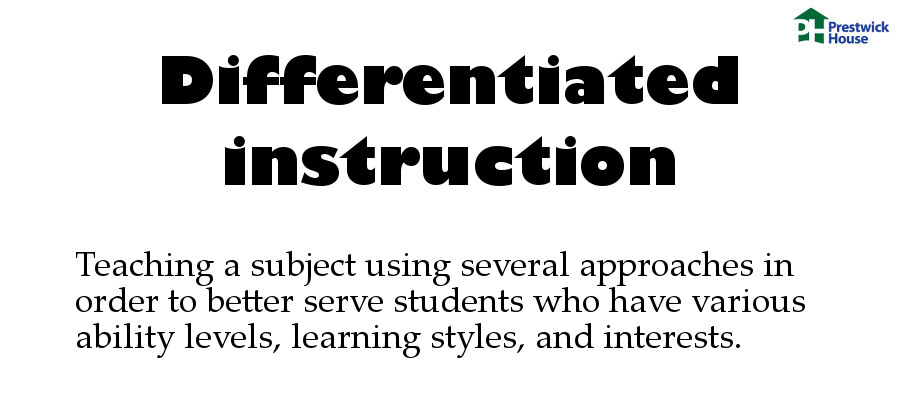What is differentiated instruction?
The objective of differentiated instruction is to provide several different learning avenues for the students in your classroom so that all students, regardless of ability level, learning style, or other concerns, have the opportunity to learn the material you teach in the way that they learn best.
Pre-unit assessment
Assessing your students' ability levels prior to teaching a unit is one of the tenets of differentiated instruction. By administering a pre-unit (sometimes called "diagnostic") assessment, you can get a better sense of your students' ability levels and plan your lessons accordingly.
How many ways are there to differentiate?
There are a number of ways you can differentiate instruction for your students. Here are a few:
Ability level
Differentiating by ability level means that you give several options for students based on what you know about their proficiency with the material before the unit begins. One method of differentiating by ability level is design multiple assignments that demand skills at different levels of Bloom's Taxonomy.
So, you might give advanced students tasks requiring them to evaluate the concepts or texts at hand. Intermediate students might be asked to analyze the text. Students with minimal understanding of the topic might be asked to complete exercises that require only comprehension (with the expectation that they will move to more challenging tasks later) or be asked to construct a personal response to the material.
It's important to note that all your students should be expected to learn the same material and master the same skills, regardless of the ability level they start with. Thus, differentiating instruction is not tailoring your instruction to students in the "middle." Instead, it's making sure that you challenge all your students to achieve more.
Learning style
Every one of your students is different, and each of them learns in a different way. For example, some of your students may learn best by reading the material alone. For some, listening to a lecture or an audio recording of a text may be better. Still others may learn best with visual aids. Some may prefer hands-on activities.
You know your students best, so it's up to you to devise lessons that meet the various learning styles in your classroom. If you're unsure of your students' learning styles, administering a learning style inventory will help.
Student end product
The "end product" is what your students are expected to produce at the end of the unit. It's meant to be a demonstration of the skills and knowledge they've worked on and mastered throughout the unit.
This product can take many forms: an end-of-unit test, a report, a creative project, and more.
When possible, give your students several options from which to choose; this allows them to demonstrate their expertise in the way that most interests them, which will (ideally) make them more invested in the end product.
Questions? Get in touch!
Differentiation is a huge subject, and we could write thousands of words on the subject, but that's for another post (or a whole series) entirely.
In the meantime, if you'd like to talk to one of our curriculum specialists, give us a call at 800-932-4593 and one of our friendly Customer Service reps will connect you. Or you can email us—put "differentiated instruction" in the subject line and we'll get back to you soon.
We have all kinds of teaching guides that will help you differentiate your instruction with activities, student response prompts, Bloom's Taxonomy and more.
